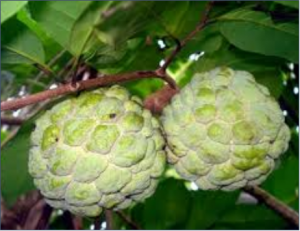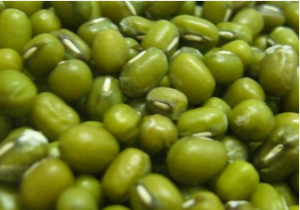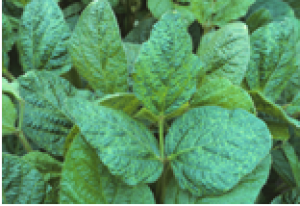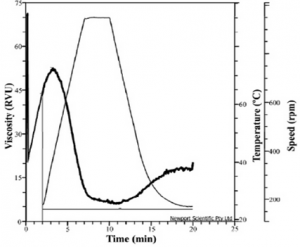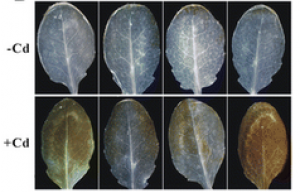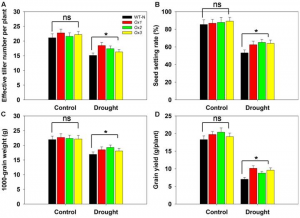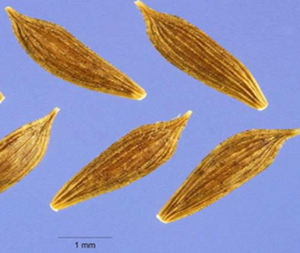Sugar apple (Annona squamosa L.), a popular fruit with high medicinal and nutritional properties, is widely cultivated in tropical South Asia and America. The malformed flower is a major cause for a reduction in production of sugar apple. However, little information is available on the differences between normal and malformed flowers of sugar apple.
CRISPR/Cas9 has become a powerful genome-editing tool for introducing genetic changes into crop species. In order to develop capacity for CRISPR/Cas9 technology in the tropical staple cassava (Manihot esculenta), the Phytoene desaturase (MePDS) gene was targeted in two cultivars using constructs carrying gRNAs targeting two sequences within MePDS exon 13. After Agrobacterium-mediated delivery of CRISPR/Cas9 reagents into cassava cells, both constructs induced visible albino phenotypes within cotyledon-stage somatic embryos regenerating on selection medium and the plants regenerated therefrom.
Mungbean is an important pulse crop extensively cultivated in Southeast Asia for supply of easily digestible protein. Salinity severely limits the growth and productivity of mungbean, and weeding poses nutritional and disease constraints to mungbean cultivation. To pyramid both salt tolerance and protection against herbicide in mungbean, the AtNHX1 encoding tonoplast Na+/H+ antiporter from Arabidopsis, and bar gene associated with herbicide resistance were co-expressed through Agrobacterium-mediated transformation.
Soybean mosaic virus (SMV) is a member of Potyvirus genus that causes severe yield loss and destroys seed quality in soybean [Glycine max (L.) Merr.]. It is important to explore new resistance sources and discover new resistance loci to SMV, which will provide insights to improve breeding strategies for SMV resistance. Here, a genome-wide association study was conducted to accelerate molecular breeding for the improvement of resistance to SMV in soybean.
Starch pasting viscosity is an important quality trait in cassava (Manihot esculenta Crantz) cultivars. The aim here was to identify loci and candidate genes associated with the starch pasting viscosity. Quantitative trait loci (QTL) mapping for seven pasting viscosity parameters was carried out using 100 lines of an F1 mapping population from a cross between two cassava cultivars Huay Bong 60 and Hanatee.
Soybean (Glycine max [L.] Merr.) cultivars are generally sensitive to flooding stress. The plant growth is severely affected and grain yield is largely reduced in the flooded field. It is important to develop flood-tolerant soybean cultivars for grain production in regions of heavy rainfalls worldwide. In this study, a total of 722 soybean genotypes were evaluated for flooding tolerance at R1 stages (first flower at any node) in the 5-year flooding screening tests.
Non-essential trance metal such as cadmium (Cd) is toxic to plants. Although some plants have developed elaborate strategies to deal with absorbed Cd through multiple pathways, the regulatory mechanisms behind the Cd tolerance are not fully understood. Ferrochelatase-1 (FC1, EC4.99.1.1) is the terminal enzyme of heme biosynthesis, catalyzing insertion of ferrous ion into protoporphyrin IX. Recent studies have shown that FC1 is involved in several physiological processes.
Drought is one of the environmental factors that severely restrict plant distribution and crop production. Recently, we reported that the high-affinity potassium transporter OsHAK1 plays important roles in K acquisition and translocation in rice over low and high K concentration ranges, however, knowledge on the regulatory roles of OsHAK1 in osmotic/drought stress is limited.
Kochia (Kochia scoparia L.), Russian thistle (Salsolatragus L.), and prickly lettuce (Lactuca serriola L.) are economically important weeds infesting dryland wheat (Triticum aestivum L.) production systems in the western United States. Those weeds produce most of their seeds post-harvest. The objectives of this study were to determine the ability of an optical sensor, installed for on-the-go measurement of grain protein concentration, to detect the presence of green plant matter in flowing grain and assess the potential usefulness of this information for mapping weeds at harvest.
Northern corn leaf blight (NCLB), the most devastating leaf pathogen in maize (Zea mays L.), is caused by the heterothallic ascomycete Setosphaeria turcica. The pathogen population shows an extremely high genetic diversity in tropical and subtropical regions. Varietal resistance is the most efficient technique to control NCLB. Host resistance can be qualitative based on race-specific Ht genes or quantitative controlled by many genes with small effects. Quantitative resistance is moderately to highly effective and should be more durable combatting all races of the pathogen.


 Curently online :
Curently online :
 Total visitors :
Total visitors :
